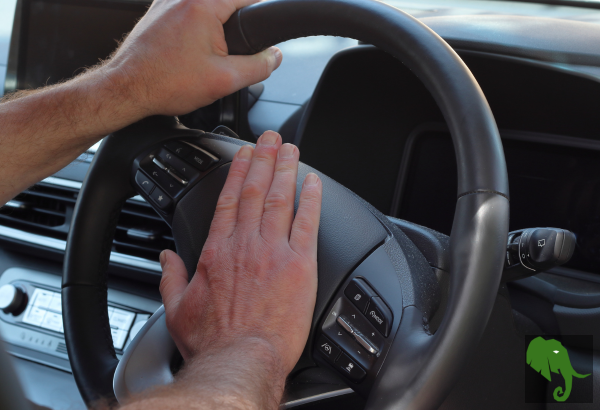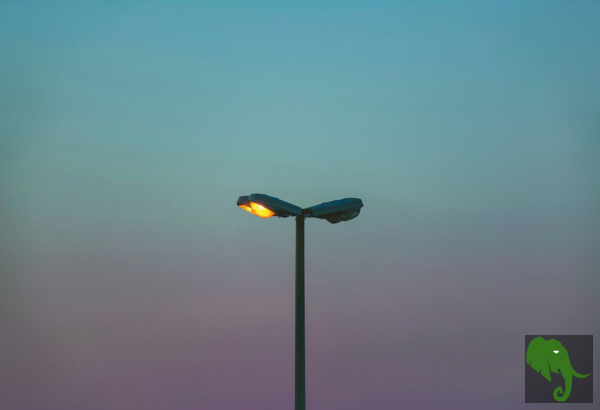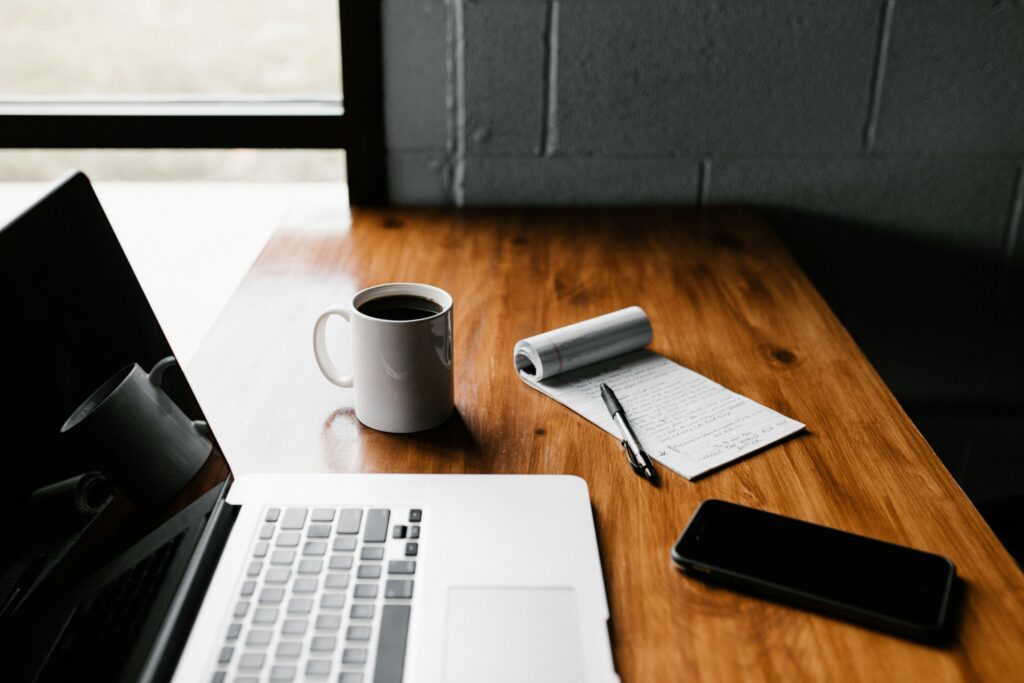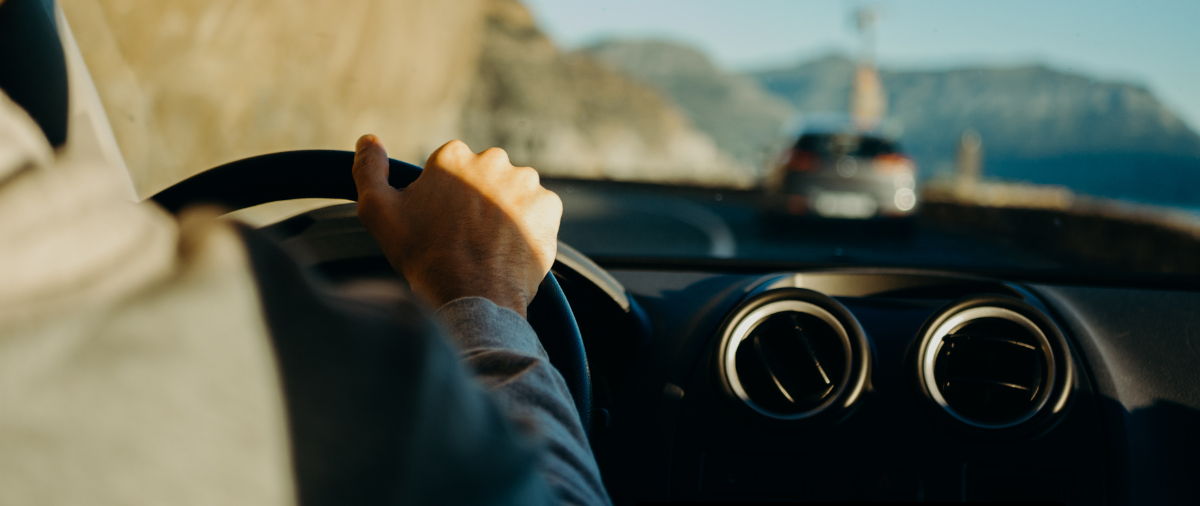
As we talk about vehicle safety this time, I am going to focus on things perhaps just a little outside of the normal precautions you may already take and also maybe the things you may know about but just do not do yet. This is meant to be a guide to better vehicle safety overall. I am going to try and avoid the things you might consider more basic, like wearing your seat belt, not leaving your kids or pets in a hot vehicle, and not drinking and driving – things we know we should or should not be doing. If you take away one or more of the things suggested here and put them into practice, I know they can help keep you and your loved ones a little safer when out and about on the roadways.
Inside Your Vehicle
As we start building out this guide to better vehicle safety, we have to talk about the inside of our vehicles. Maintaining a safe and well-equipped vehicle can be extremely helpful for ensuring your safety and that of your passengers. Plus, you will be better prepared for what may come your way.
Here is my list of the top things you should keep in your car at any given time and where you keep them:
Inside the Cabin
- Trauma and first-aid kit(s), including tourniquets
- Glass breaker / seat belt cutter
- Vehicle operator’s manual
- Flashlight
In the Trunk or Back
- Extra clothes, including jackets, and shoes suited for the current season
- Blanket(s)
- Water, enough for you and the number of folks usually with you
- Roadside markers, like flares or reflective triangles
- Get Home Bag(s) (GHB), supplies for you and the number of folks usually with you
- Lug nut key
- Jumper cable or jump box
- Portable air compressor (not a must, but a very nice to have along with some tire plugs)
Sure, there are lots of other things we might like to keep in our vehicles. That is fine. I have some too. These are just things I feel like you should definitely consider having that can make your life much easier. Plus, I like to be more prepared than not, more often than not.
Consider any other special needs or considerations for yourself or those you may have with you, including medications. Also, when traveling, consider the needs of your pets and at least ensure you have bowls and water for them. You never know when or where something bad could happen and these items can make those times much easier and safer for you and yours. Can you think of any others to add to the lists? If so, leave them in the comments below.
Mechanical and Related
Engine
You may not think about your engine as a means of better ensuring vehicle safety but it is. The key thing here is to ensure your oil, engine coolant, brake fluid, and power steering fluid are all at the proper levels. Why? Because they are what allow your vehicle to run well most of the time and most importantly, reduce the chances of you getting stranded on the side of the highway or road after dark. Again, you never know when or where something may happen. I have been stranded on the side of the road a few times and it is never convenient or fun. Sure, you can wait and deal with whatever comes your way; but it is better to try and be at least a little more proactive when it comes to finding things that may indicate the need for maintenance. I recommend regular maintenance too. While nothing completely prevents breakdowns, as age takes its toll, taking care of your vehicles can help postpone them. This is kind of like humans in that way…
Gas
Additionally, you want to make sure you have enough gas. You really should not let your tank get below about a quarter of a tank remaining. With things being the way they are at times, ensuring you remain at half or more is even better if you can. We might be tired or it might not be convenient all the time to get gas when we need it; but consider too if there was another gas crisis or you needed to get somewhere further than the gas currently in your tank allowed for. While it does not need to be a crisis, it is important you make getting gas when you need it a priority; and get it before dark, especially if you have your kids with you.
I know many of you seem to love letting your tanks get nearly empty before getting gas. You know who you are, so let me share some reasons to re-consider that approach.
- Condensation can build up over time in your tank if you do not keep it fuller than not. This can be especially an issue in colder weather. Water in the gas line is never good.
- The risk of running out and getting stranded if you travel where gas stations are few and far between.
- Putting additional stress and strain on your fuel pump over time causing it to wear or even fail prematurely. The pump is what gets the fuel to the engine. They can be difficult to get to which means the maintenance to replace them can be very expensive.
- Forcing you into the undesirable situation of having to stop for gas in a bad part of town that you would otherwise be avoiding like the plague.
- Causing you to be late to work, school, a date, or any other important appointment if you realize you need gas.
- Angering your significant other, friend, or family member when they get in the vehicle to go somewhere when they see you are almost out.
Tires
Tread
As we continue building out this guide to better vehicle safety, we have to talk about tires. Much like your vehicle’s lights, you want to check the tread on your tires a few times a year. Lack of tread can lead to unsafe driving conditions because your vehicle will not have the traction it needs in the wet, ice, snow, or even if you are a spirited driver going through corners. Do not wait until the next time you visit your mechanic for something unrelated. It is your vehicle, so you need check it. Have a friend or family member do it with you if you are not sure what to look for.
Tire Pressure
Tire pressure will fluctuate especially when it starts to get cold and again when it warms up. If your tire pressure monitoring system is working and accurate, it makes it easy to have a regular look to see where your pressure is. If not, checking tire pressure once a month is something you should add to your to-do list, especially in the transitional seasons. Proper pressure will keep your traction where it usually needs to be, increase/improve tread life (as opposed to when tire pressure is low), and even give you better gas mileage as your vehicle rolls a bit easier with the right amount of air pressure in tires.
Lights
Check your headlights, tail lights, including brake lights, and turn signals every 6 months or so. It just helps you be that much safer in the regular operation of your vehicle. If you do not have someone that can help with the tail and brake lights, back up towards a wall or your garage door. For your tail lights, you can get out and look. For the brake lights, look for equal reflection of light being present on both sides. Simple enough, but checking lights is an often overlooked task. Check them out!
Security Measures
So often when we hear about vehicle break-ins, they probably were not technically a ‘break-in.’ Two things people do all the time – leave their vehicles unlocked and leave valuables out in plain sight. I cannot cite the percentage of time this is the case; but I can tell you that after working 24 hours with local county law enforcement, that most if not every call we received involving theft from a vehicle involved either the doors being left unlocked or valuables being left in plain view or both.
Situational Awareness
We could not offer this as a guide to better vehicle safety if we did not talk about situational awareness. Situational awareness is key when around/outside your vehicle whether you are out in public or at home. Why? Because our vehicles are generally outside our immediate dwelling, our safest space, and they offer a lot of spots where the ability to see things can be blocked unless we make the extra effort. Situational awareness while inside of our vehicles is just as important if not more so. Why? Because our vehicles are a confined space giving us somewhat limited options to respond should we need to; and because some of our ability to see out can be more inhibited.
Working In and Around Your Vehicle
Pay attention to your surroundings, especially when vacuuming your vehicles out, performing maintenance under the hood or the entire vehicle, or putting air in your tires, etc. Regularly look up and scan what is going on around you to ensure no one is approaching that you were not already aware of. This is particularly important at public car washes or gas stations, where you are more vulnerable.
On occasion, we find ourselves in somewhat vulnerable places or predicaments. It’s OK. That’s life. We just need to stay alert and, every few minutes, pop our head up and look around when you are working on or in our vehicles. Your goals are to avoid surprises and give yourself time to get away or respond to a situation as you deem necessary.
Leaving and Returning to Your Vehicle
Take just a moment or two and look around before getting out of your vehicle. When returning to your vehicle, from shopping for example, pay attention to who and what is around you. Distractions like loading groceries, playing on your phone, or dealing with the kids can all make you an easier target. Staying alert can help you avoid potentially dangerous situations. Plus, if you look like your are alert and paying attention, you can make yourself less attractive as a target.
Again, the sooner you spot something the more time you have to react and do what it is you need to do to either leave or respond as needed.
Lock Your Doors
Yes, lock your doors and roll up your windows, even when you are home. Let me say that again. Lock your doors, even when you are at home. Your vehicle and its contents are not safe just because you are parked in your driveway, the carport, or down on the street in front of your house.
You also need to lock your doors when you get out of your vehicle to get gas, as one specific example I know folks are not always in the habit of.
And locking your doors is not just about locking them when you leave your vehicle. You need to be locking your doors right after you have gotten into your vehicle as well.
Vehicle security extends well beyond locking doors too.
Never Leave Valuables In Plain Sight
Get out of the habit of leaving any valuables inside of your vehicle in plain sight. This is what motivates the bad guys. Among the top taken items from vehicles is keys, money, and medications. If you do have valuables and you cannot take them with you, for whatever reason, lock them in the glove box or the trunk.
Keys
Never leave your keys in the car, even when parked at home. This includes not hiding them inside the car, like above the visor or under the front seat, as criminals are familiar with all the common hiding places.
Ladies, make an effort not to leave your purse in a vehicle, especially with your keys in the bottom. Push start ignitions work well when that key fob is close by, so it is not hard to drive off with your vehicle with the bonus of your purse and its contents too.
Always take your keys with you and … get into the habit of locking your doors immediately after exiting.
Turn Engine Off
Do not leave your vehicle running while unattended, at least not for any extended period of time. I cannot tell you how many times I have walked by vehicles in different places with their doors wide open and/or their engines running with the owners nowhere to be seen.
There is a remote start option for many Makes and Models now. I get it; but I would still encourage everyone to exercise caution with when and where you opt to use that option; and either way, minimize the time between starting the engine and the time you are getting to your vehicle.
Backseat or Back Area
Anytime you go out into public, take a moment to check your backseat before getting back into your car, especially after dark. This simple habit can help you avoid potential danger from someone hiding in your vehicle. Carry a small flashlight or use your phone’s light to assist with this task after dark. It takes 2 seconds and means you are making things safer for you and anyone with you.
Firearms
Do not leave firearms unattended in your vehicles. Guns are a hot item for thieves. Guns taken from vehicles is just one way guns wind up in the hands of bad guys. Not cool.
Decals and Bumper Stickers
Avoid putting those family stickers or other identifying information on your vehicle. While they might seem harmless and fun, they can provide a fair amount of valuable information to potential criminals about the number and ages of your family members, just as an example. And the gun decals or similar may give the impression to the bad guys that guns may be on board, opening yourself up to unwanted troubles potentially. Remember, keep as much personal information personal as possible. Why just give it away and make it easier?
While Driving
Obviously, these do not cover every safety tip you might can think of. These are just the few that are always on the top of my mind as I drive and as I observe others on the road.
Space in Front
When at a stop for whatever the reason, leave space between your vehicle and the one in front of you. Tailgating is not only rude but also hazardous. In an emergency, having sufficient space allows you to maneuver safely. The rule of thumb is to ensure you can see the rear tires of the vehicle ahead of you. This distance provides enough room to react and avoid potential collisions or even evade bad situations and goes a long way to ensuring better vehicle safety.
Lights
If you want to improve vehicle safety for yourself and those sharing the road with you, turn on your lights. I cannot tell you how many people I see driving in inclement weather or just at dusk or dawn with their lights completely off. This includes newer vehicles which means they have to be intentionally turning off their driving lights which would otherwise be turned on when their vehicle is started. It is like they want to be hit or something. It makes no sense to me. Enough venting.
Turning on your headlights in low light or bad weather conditions is another critical safety measure. Headlights are not just for your visibility but also for others to be able to better see you. Even if it’s not a legal requirement in your area, turning on your lights is a good, safe habit to be in. Everyone else needs to and should be able to see you.
Slick Road Conditions
Just a couple of quick points in our guide to better vehicle safety that will make driving considerably safer in inclement weather when the roads are super slick due to rain, ice, or snow. Not to say there are not others; but these are my two primary observations of things we can all do better with.
- Leave plenty of space between you and the vehicles in front of you. Give them the space and allow yourself the space. Remember, space equals time to react and hopefully enable you to avoid that rear-end collision
- Stop hitting the brakes when you are going through standing rain puddles or over those patches of ice. You are only making things more hazardous for yourself and those around you. The standing water and ice allows for little to no traction. Therefore, when you hit your brakes after you are on or in them, the likelihood of you losing control increases, because you do not have the traction you need to slow down or steer effectively. This is even more true if your tire tread is wearing out. Instead, opt to slow down before you get to the trouble area. If you do not notice the trouble areas before you are on top of them, start paying closer attention.
When Parking
These are also the top things I have observed over time that we can do better with.
Emergency Brake
Use it! I know so many people that do not use it, even when parking on inclines. The hassle and potential for damage averted by just pushing that foot lever, pulling that hand brake, or pushing that button is greater than the inconvenience it seems to cause some people. Get in the habit of setting your emergency brake.
Parking on Hills
In providing this guide to better vehicle safety, I have to talk about parking on hills. I cannot tell you how many cars are parked in such a way that little could be done if they started to roll. This is because I see most cars with their wheels straight when parked on hills. This is not good.
When parking on hills, even what may seem like only slight inclines, always turn your wheels in the correct direction and set your emergency brake. If parked UPHILL, turn your wheels AWAY from the curb. If DOWNHILL, turn them TOWARDS the curb. This practice helps prevent your vehicle from gaining a lot of momentum should it start to roll. It can prevent your vehicle from rolling into traffic or into someone’s property if your transmission slips or fails. Vehicles are not light and it just takes a little bit of momentum to get them going.
Be safer. Set that emergency brake and turn correctly into or away from the curb on an incline dictates.
Conclusion
Improving vehicle safety encompasses a range of practices, from keeping our vehicles well-equipped and maintained to staying aware of our surroundings and practicing safer driving habits. Nothing is a 100% guarantee and there is no magic that is going to work 100% of the time; but by following these tips, you can improve your own safety and that of your passengers.
Remember, a little preparation and vigilance can go a long way in being better prepared for what life might throw at us and ensuring better vehicle safety.
See ya soon!
Related Content

Mad Behind the Wheel: Understanding and Managing Road Rage
My family sometimes jokes that I drive like an old man. But in reality, I consider myself a good driver. I do acknowledge that there…

Enhancing Your Safety While Getting Gas
Filling up your gas tank is a routine task, but it comes with its own set of risks. Whether you’re in a bustling city or…

The Importance of Parking Under or Near Light for Safety
When you find yourself needing to go to a store at dusk, dawn, or after dark, one crucial safety measure to consider is where you…

Read other OwnGuard Solutions blog posts
Read our other posts centered around being safer and better prepared.

